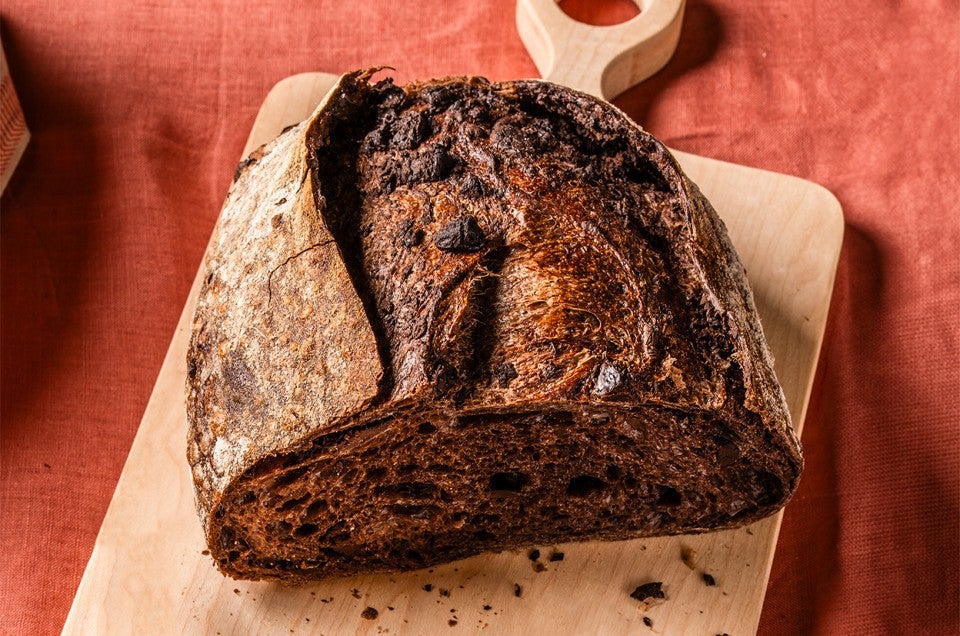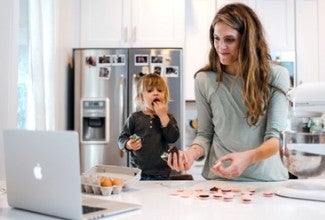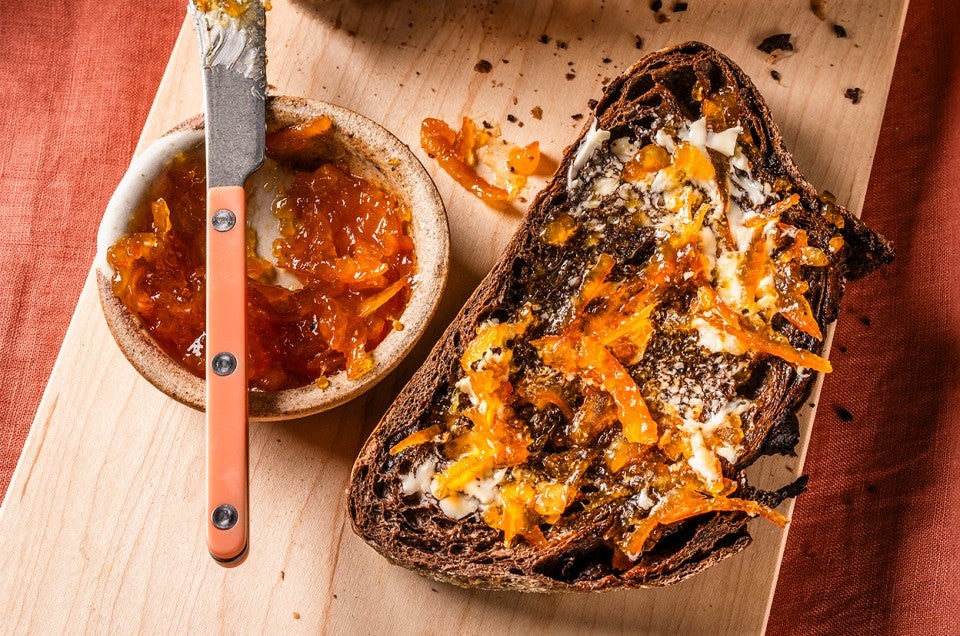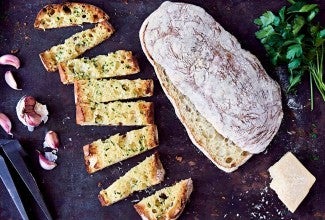-
To make the preferment: The evening before you want to mix the dough, in a large bowl, combine the flour, water, and sourdough starter, and mix until no dry patches remain, then knead in the bowl by hand until smooth. Cover and let stand at room temperature overnight, 12 to 16 hours.
-
To make the dough: Add the warm water to the preferment, then squeeze the preferment through your fingers to break it up. Next, holding your hand in a clawlike position, vigorously mix the preferment into the water until well combined. The mixture will look like lumpy pancake batter. Add the flours, cocoa, and salt and mix well until no dry spots remain.
-
Once you’ve mixed the dough, cover the bowl and let the dough rest for 20 minutes. Using a wet hand, perform a bowl fold: Grab a section of dough from one side of the bowl, then lift it up and press it into the center. Repeat this motion 8 to 12 times, grabbing a new section of dough each time until you've made a full circle around the bowl. Round out the dough by cupping your hand and applying pressure toward the bottom of the dough, forcing it into the bottom and side of the bowl to create tension. Cover and let it rest for 20 minutes.
-
Perform a second bowl fold until the dough resists stretching, round out the dough, then cover and let rest for 20 minutes.
-
Moisten a 20" square area of your work surface by dipping your hand in water and spreading it across the surface. (Using water, rather than flour, ensures that no white streaks appear in the final bread.) Use a bowl scraper to ease the dough onto the moistened area and then stretch and pat it into a 16" square. Evenly sprinkle the chips or chopped chocolate over the dough.
-
Fold the dough like a business letter by first folding the left side toward the right, then the right side over the left so you have a rectangle that’s about 16" x 4" with a short side facing you. Beginning at the top, roll up the dough; when you reach the end, pinch the seam and roll the log back and forth to develop some surface tension.
-
Return the dough to the bowl and let it rise, covered, for 1 hour.
-
Uncover, perform two to three coil folds until the dough resists stretching, then cover the bowl and let the dough rest until it is noticeably risen and marshmallowy, 1 to 1 1/2 hours.
-
Lightly flour a work surface, then use a bowl scraper to ease the dough onto the work surface. With a bench knife or sharp kitchen knife, divide the dough into two equal portions (each about 800g). Gently preshape the dough into rounds, then place it seam-side down on the work surface, cover, and let it rest for 20 minutes.
-
Heavily dust two cloth-lined 9" x 3" round or oval proofing baskets (brotforms) with flour.
-
Shape the dough into boules or bâtards and transfer to the proofing baskets, seam-side up. Cover and let them rest at room temperature for 1 to 1 1/2 hours, then transfer to the refrigerator and chill overnight. At the end of this slow rise, the dough should feel light and marshmallowy and when pressed with a floured finger, a small impression should remain.
-
To bake the chocolate sourdough bread: Arrange racks in the center and bottom thirds of the oven. Preheat the oven to 475°F with a baking stone or steel on the center rack and an empty cast iron skillet (or a cake pan full of lava rocks) on the lower rack. If possible, adjust the stone and pan so that the skillet isn’t directly under the stone, making it easier for steam to reach the baking bread.
-
Turn each loaf out of its proofing basket onto a sheet of parchment. Tuck in or remove any pieces of chocolate that are visible on the surface of the dough; otherwise, they might burn. Use a baker’s lame or razor blade to score the tops of the loaves.
-
Using a baker’s peel or an inverted baking sheet, transfer each loaf (still on the parchment) into the oven, placing them on the stone or steel side by side, and pour about 1 cup of warm water into the skillet. Steam will billow from the pan upward to envelop the bread; be sure to wear good oven mitts to shield your hands and arms. Quickly close the oven door to trap the steam.
-
Bake the loaves for 25 minutes, then reduce the oven temperature to 450ºF and continue baking until the loaves are deeply browned, the crust is firm, and the internal temperature registers 210ºF, 15 to 20 minutes longer.
-
Let the chocolate sourdough bread cool completely on a wire rack before slicing.



















